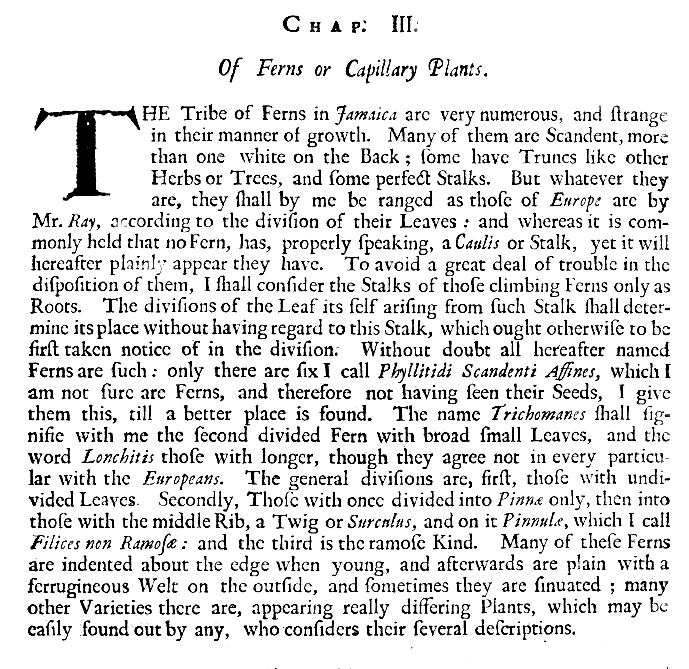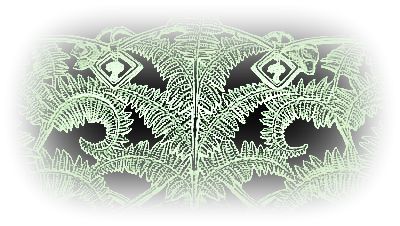
It
was in the Victorian era, however, that man's passion
for them reached its zenith. The craze for collecting ferns
in this
period reached such epidemic proportions that
it
affected the very existence of the plants themselves.
Although in previous centuries
ferns were valued for
their medicinal worth,
and played an important role in
customs
and folklore, it was only in Victorian
times that
they were coveted for aesthetic reasons. Ferns were
proudly displayed in homes, either alive or dead. It was
fashionable for ladies, especially, to compile albums of
pressed ferns. . . .
In
the latter stages of the 19th century
the interest in
ferns changed from an obsession with their collection to
their
cultivation. The mania also spread from the
living
plant to depicting it in stone,
iron and glass. Even roads,
and terraced houses were named after the fern.
'Rambles
Through Fernland' : The Victorians' Passion
for Ferns
just a part of the 'Fern Craze'.
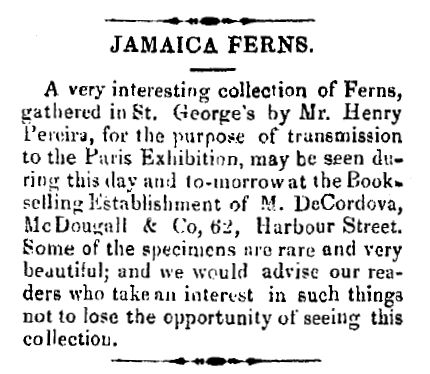
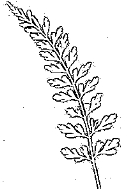
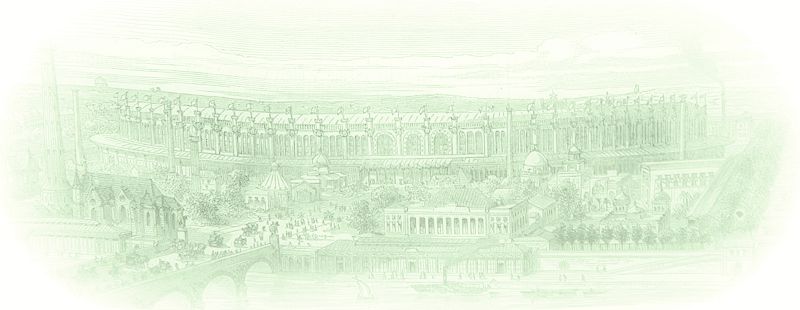
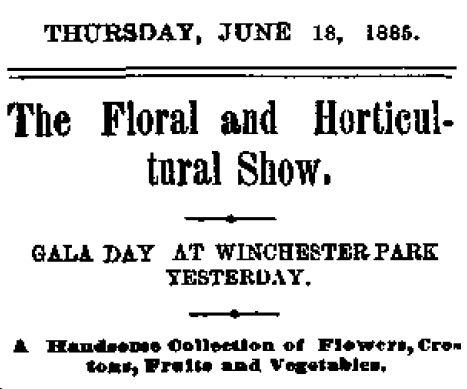
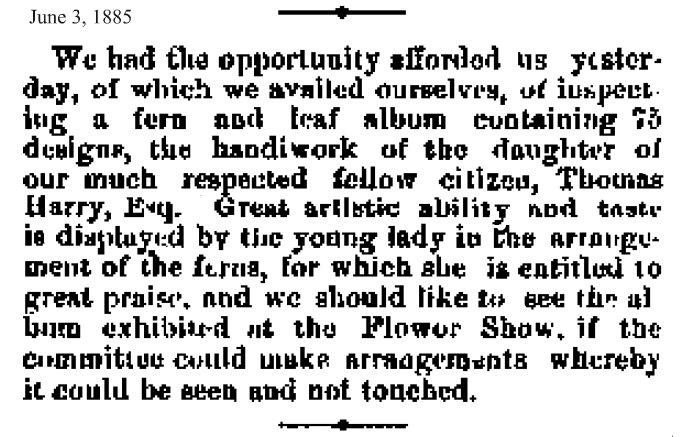
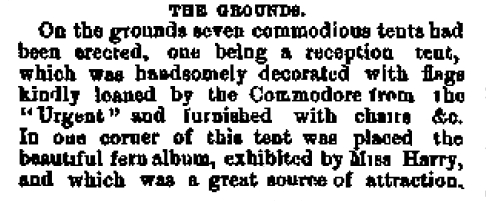
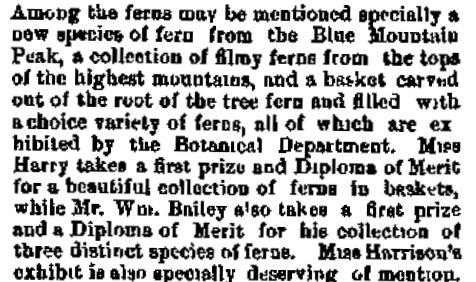
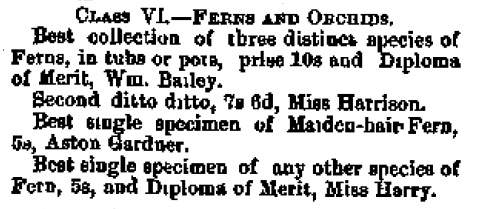
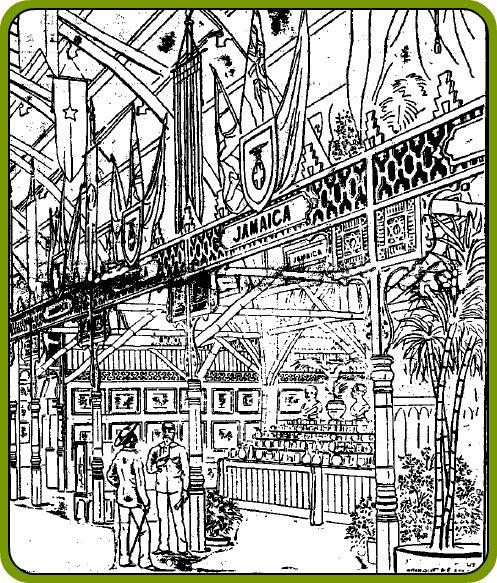
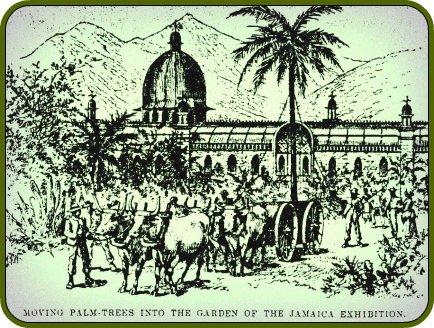

Daily Gleaner, November 14,
1890
St Catherine Exhibition
Mrs
J. A. S. Vaz, the wife of the
energetic Secretary of the
Exhibition shows pressed ferns most artistically arranged in
frames, the work of her own
hands.
Manchester Exhibition
An
excellent exhibit was a rustic bracket
made
from the arrows of the wild cane
gathered on the banks of the Milk
River;
and two photo frames of the same
material
with ferns, both exhibits being shown by Miss E. A. Bonitto, Mandeville. Another Mandeville lady, Miss Scharschmidt, exhibited some beautiful and artistic work, fans made of ferns and lace bark, and palm
screens hand-painted.
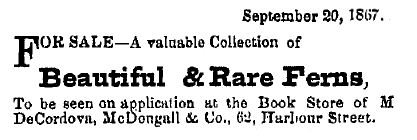
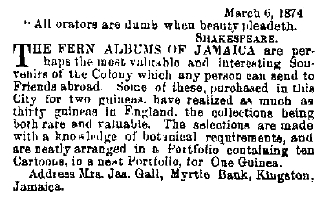
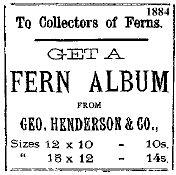

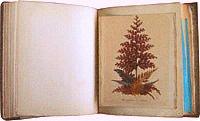
is the best I could do, comparing four copies of the advert,
all very messy and blurred!
You
must ask to see Mr. Gall's collection
of Jamaica Ferns, collected from all parts of the island, very beautifully preserved, and mounted on card-board, each Sheet containing a very large variety of Ferns.
► Ask to see Gall's Fern Albums, 21s
which are gorgeous; they are not only
wonderful
for the variety of their Ferns,
but also for the magnificent manner
in which they are arranged, so as to
present not only anatural, but very
pleasing effect.
OUR FERN ALBUMS
In no other country – we may venture to assertthis, albeit no great Botanist – is to be found so
beautiful or diversified a distribution of Ferns as
can be gathered within Jamaica. From the
lace-work of Nature's tracery, the most beautiful
vegetable life is developed so clearly as to make
specimens of these plants an absolute necessity as
student, or for the Drawing-room table of those
who, with their c/vases[?] of growing Ferns in
the window alcove, desire to compare the living
family of local habitat with that of far-distant and
foreign countries.
In
furtherance of this idea – and we
shall be
thanked for the information we
now impart
- there can be purchased in
Kingston Fern
Albums containing ten [graceful?]
[specimens?] of Jamaica Ferns, not only
tastefully, but artistically arranged for
preservation and study. Each group is
carefully selected with reference to affording
[specimens] of the abundant fertility of
nature in the growth and variety of
these
delicate plants, while the method of
preservation affords full security to their
[possessors?] that they will endure for any
period so long as but ordinary care is taken
when removed from the Album for
display.
It affords us pleasure to notice
that these
collections are the work of
Mrs James Gall
of Myrtle Bank, Kingston
and to add that,
as memorials of
affection to absent friends,
particularly to
fair cousins at home, no more
graceful or acceptable present could be
conceived.
Setting aside their value to
Botanical
research, as specimens of what
Jamaica can
achieve in native production,
they are as creditable to the Colony as they
are to the lady whose admirable taste has taken a [direction? rty] to make these albums a speciality for the strangers visiting the Colony. To [ ] to [ ] and to admire and so to purchase.
- County UnionAs late as 1915, Astley
Clerk, the secretary of the Jamaica
Local
Literary Association, was responsible for a volume of the Association's Magazine - Vol 2 No11 (March 1915) -
which was a special
issue on ferns of Jamaica,
containing pressed and dried specimens.


